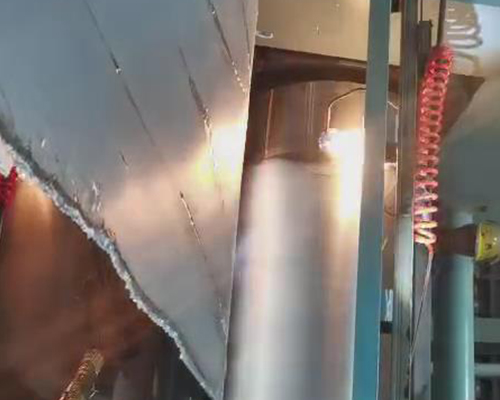The casting nozzle is the “throat part” of the continuous casting and rolling mill that the aluminum melt is sent to, and its role is very important. Once the aluminum casting nozzle clogging problems occur, the casting and rolling machine can only be shut down for replacement, resulting in production interruption, waste of manpower and material resources, and reduced production efficiency.
With the development and progress of science and technology, remarkable progress has been made in the treatment of aluminum melt. In the production process, a series of purification and filtration treatments are carried out on the electrolytic aluminum liquid to remove the inclusions in the electrolytic aluminum liquid, and a cleaner aluminum liquid can be obtained. To a certain extent, to ensure that the melt passes smoothly through the nozzle. However, the clogging of the casting nozzle is still the main problem faced in the aluminum alloy production process.
Through the combination of on-site production practice and theoretical analysis, the cause and formation mechanism of the blockage of the casting nozzle in the aluminum alloy production process are studied, which provides guidance for aluminum alloy process optimization and production.

In the nozzle cavity, not only the phenomenon of reaction dross, but also the deposition of fine inclusions in the melt. When the casting speed reaches 7 m/min, the flow field inside the nozzle cavity becomes more complicated as the casting speed increases, and the inclusion particles in the melt are forced to cause physical movement and collisions. The inside of the nozzle material is composed of intertwined fibers with many holes. The reaction causes the uneven surface of the casting nozzle and the existence of its own holes, so that the surface of the casting nozzle has a larger specific surface area and higher adsorption energy, and has a strong ability to intercept non-metallic solid inclusions in the melt. At the same time, the tiny TiB in the refining agent added in the casting process, the particle particles will be intercepted by the inclusions on the casting nozzle. This will not only affect the grain refinement of the final aluminum cast plate, but also aggravate the blockage of the casting nozzle.
The increase in the roughness and specific surface area of the cavity caused by reaction in the nozzle cavity and slagging promotes the solidification of the liquid aluminum alloy on the inner surface of the nozzle cavity, which further causes the nozzle cavity to become narrow. At the same time, due to the existence of the solidification phenomenon of the aluminum alloy, the bonding strength between the inclusions and between the inclusions and the nozzle material is increased. The high-speed flow of aluminum alloy fluid is difficult to effectively affect the slagging in the scouring of the casting nozzle cavity, which makes the casting nozzle clogging prone to occur in the casting-rolling process.

